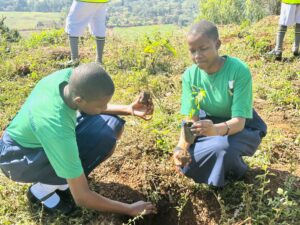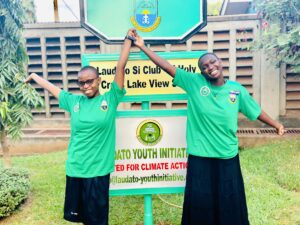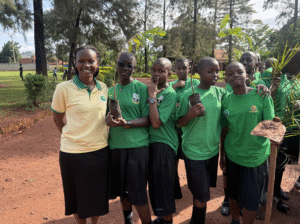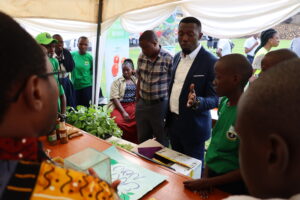In a significant stride towards fostering environmental stewardship among the youth, the Laudato Youth Initiative (LYI) is poised to unveil a comprehensive model aimed at integrating the principles of Laudato Si’ into various facets of Ugandan society, including schools, universities, dioceses, parishes, and communities. This initiative aligns with the global call for ecological conversion and underscores the importance of youth involvement in climate action. Whereas the world grapples with youth involvement in Church matters, the Church in Uganda offers many programs that inspire youth to participate in faith matters. Faith and Science are complementary values. A method that must interest the youth should integrate faith and science while remaining central to the implementation of human growth, which inspires creative thinking, listening, and acting (engaging). Our focus will be;
A Faith-Based Approach to Environmental Stewardship
The LYI’s model emphasizes the fusion of faith and ecology, encouraging young people to view environmental care as an integral part of their spiritual and moral responsibilities. By establishing Laudato Si Clubs within educational institutions and faith communities, the initiative seeks to cultivate a culture of sustainability rooted in Catholic Social Teaching and the encyclical Laudato Si’ to help young people see the interconnection that exists to form them spiritually, socially, academically, economically, and give hope for a sustainable future that is what young people are looking for.
Key Components of the Model
1. Ecological Education and Awareness
The model advocates for the incorporation of ecological education into school curricula, promoting awareness about environmental issues and encouraging sustainable practices. This includes organizing workshops, debates, and seminars that focus on climate change, biodiversity, and the ethical implications of environmental degradation. Key to note is the escalating plastic pollution and other forms of pollution that are damaging agricultural land, the food basket of Uganda, Water resources, the livelihood of all people, leading to biodiversity loss and poor quality of breathing air.
2. Community Engagement and Action
Laudato Youth are encouraged to actively participate in community-based environmental projects such as tree planting, waste management, and the creation of community gardens. These initiatives not only contribute to environmental conservation but also strengthen community bonds and foster a sense of collective responsibility. We also engage young people in creative thinking to be part of the solution, where their ideas are heard and they become part of the process that forms the solution for their communities. This approach sparks an inspiring vision among young people.
3. Advocacy and Civic Education
The model empowers young people to engage in media advocacy efforts aimed at influencing local communities to take action and interpreting guiding documents into visuals, paintings, and pictures that easily communicate the message of our role in the problem and the need for our action in the solution. This also applies to national policies related to environmental conservation. Many Ugandans still commit environmental Crimes due to a lack of knowledge about environmental laws. By collaborating with diocesan and parish leaders, youth can enter into dialogue with stakeholders for the adoption of sustainable practices and the implementation of policies that protect the environment.
4. Integration of Indigenous Knowledge
Recognizing the value of indigenous knowledge systems, faith, the model encourages the incorporation of traditional ecological practices into modern environmental strategies. This approach not only preserves cultural heritage but also enhances the effectiveness of conservation efforts. From food security to preservation of our indigenous species of trees, food, conservation practices, etc
5. Utilization of Technology and Innovation
The initiative promotes the use of technology and innovation in addressing environmental challenges. This includes the development of digital platforms for environmental education, the use of social media for awareness campaigns, and the adoption of sustainable technologies in community projects to foster collective action against biodiversity loss.
Watch our Laudato Si Series to understand what is happening to our common home.
Alignment with Global and Local Frameworks
The LYI’s model aligns with the United Nations Sustainable Development Goal 13 on Climate Action and Uganda’s environmental laws, ensuring that local initiatives contribute to global objectives. By integrating these frameworks, the model provides a structured approach to environmental stewardship that is both locally relevant and globally connected.
The forthcoming release of the Laudato Youth Initiative’s model represents a pivotal moment in Uganda’s journey towards sustainable development. By empowering the youth to take active roles in environmental conservation, the initiative not only addresses pressing ecological challenges but also nurtures a generation committed to the care of our common home. Through education, community engagement, advocacy, and innovation, the LYI is setting the stage for a greener, more sustainable future in Uganda.
Laudato Voices














